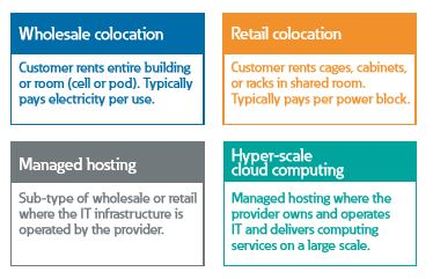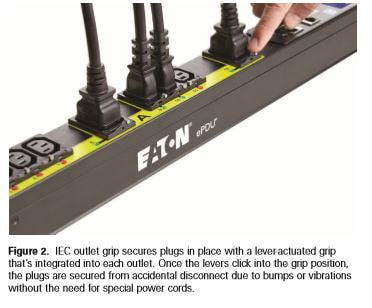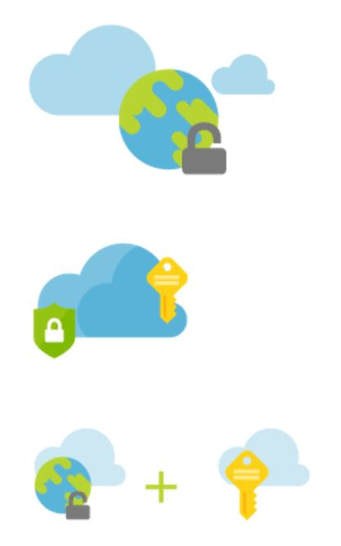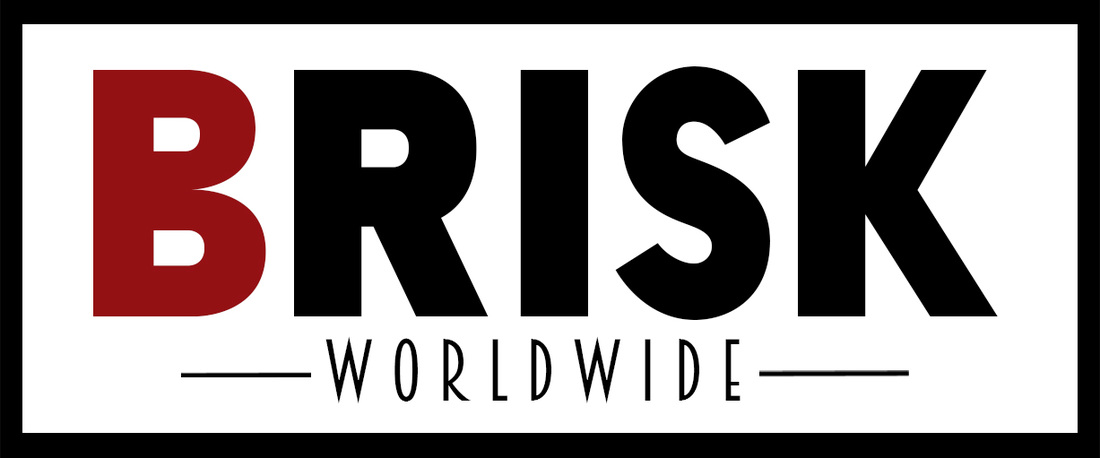Executive Summary As data and applications become increasingly important for small to medium-sized businesses (SMBs), the need for a reliable, high-performance data center is critical. Yet for many SMBs, IT — while a backbone for the business — is definitely not the business. In these situations, selecting the right colocation facility can be a daunting prospect — particularly when considering there is more that goes into a data center than racks of servers. What’s more, with today’s reliance on virtualization and converged infrastructure, the local colocation that seems like the best, most convenient choice may present overlooked legal ramifications that can be costly in the long term. When exploring colocation options, SMBs would do well to take a big picture assessment that goes beyond simply looking at hardware and software options. Privacy: More complicated than you may think Virtualization has undoubtedly been a boon for SMBs, allowing many to achieve the flexibility and compute capacity of much larger organizations. However, virtualization can also create challenges that can result in significant legal ramifications. For starters, the U.S. has different laws governing privacy of personal data than Canada, Latin America, or the European Union. SMBs need to explore whether data stored at a colocation will ever be transmitted to another jurisdiction — thereby violating privacy laws. SMBs also need to match their regulatory compliance requirements to the facility they choose. HIPAA, PCI, Sarbanes Oxley, SSAR 16, and SAS 70 are just a few of a number of standards that are meant to regulate how businesses handle sensitive data. Make sure colocation providers have put into place the necessary policies, procedures, and technology that allow their facilities to be compliant, thus allowing SMBs to have their sensitive business data located outside the confines of their own four walls. Security: Both physical and logical A colocation by its very definition is a multi-tenant facility. SMBs need to evaluate both physical access to servers and equipment as well as logical access to data and applications. It is fairly simple to determine how well a colocation physically secures access to its facility and equipment; more challenging is determining the integrity of logical security. Colocation services vary drastically, from traditional data center hosting of end user equipment to advanced offerings such as managed IT and cloud. When considering advanced services that take advantage of IT resources from the colocation, be aware that virtualization enables a single server to host applications and data from multiple sources. Determining whether or not a colocation provides for logical separation can be a critical factor when deciding suitability of a particular colocation partner or particular service. Wholesale vs. retail  Not all colocations are created equal. Wholesale data centers typically provide space for servers and little else. This may be fine for SMBs that don’t require additional services and need excess computing capacity now and then. However, given that many SMBs are not in the data center operations business, additional services may be needed. This is where retail data centers come into play. Such providers offer a multitude of services in addition to just floor and rack space. Those SMBs without dedicated IT staff may want to take advantage of a number of services, such as cloud-based applications, managed hosting, managed storage, and business resiliency, among others. In addition to the variety of services a retail colocation may offer, SMBs should evaluate service level agreement (SLA) options — both in terms of what is offered as well as what the capabilities are to make good on a contract should any issues occur. While many colocations may accurately boast 5-9s in terms of reliability, SMBs need to verify that such facilities have the ability — and the intention — to redress any service level problems that should arise, and do so with a high degree of urgency. In a report released by the Natural Resources Defense Council (NRDC), the multi-tenant data center type of providers are broken up and defined as seen in next column. The facility factor In addition to services, SMBs will need to evaluate offerings on the facilities side of the equation. While a colocation may offer enough power, make sure there is redundancy. Is the colocation provider using the latest technology in high efficiency power and sensible thermal management? These are competitive advantages that will result in lower cost for the provider, and ultimately a better price for the tenant. In addition, check how easy it is to make changes.
Clearly, selecting a data center is an involved process that requires due diligence on the part of an SMB. Yet considering the mission-critical role data and applications play for many SMBs, it is important to do your homework. With virtualization and globalization, even those SMBs with only a local presence need to be aware of the implications that privacy requirements around the world could have on their operations. SMBs need to select a colocation they trust as a true partner. While the selection process may seem daunting, begin by looking at those colocation providers that have a reputation for service and reliability. If location is a priority, evaluate those facilities that are close enough to afford convenient site visits, then delve into the inner workings of those providers — everything from procedures and policies to hardware, software, and power equipment. One important criteria worth noting is whether a data center has SOC 2 certification, an independent designation that attests to adherence to security, availability, process, and privacy controls. Choosing such a data center can offer assurances that an SMB’s data is adequately safeguarded. Maximizing data center operations To find the most appropriate data center, SMBs need to do thorough research. After all, their business depends on IT. Yet selecting the right data center is only one part of the equation. To ensure maximum operational effectiveness based on an SMB’s individual reliability and security needs, it’s necessary to think on a granular level. After all, most colocations are focused on the operations of the facility overall. It’s the job of an SMB to take care of operations down to the rack level to get the most out of the data center. Whether an SMB has a rack, a group of racks, or equipment segregated in a caged section, it’s important to be able to monitor and manage its own equipment within the facility. Even though a colocation may have superior thermal management and heat rejection systems throughout the facility, an SMB’s individual rack may be vulnerable to hot spots caused by neighboring racks. Environmental rack monitors and probes can keep tabs on racks, allowing SMBs to know temperature and humidity levels for their specific equipment. For SMBs that require reliability and availability above all else, installing a UPS at the rack level can provide an additional measure of redundancy. When evaluating UPS devices, SMBs should look for the following features:
To ensure reliable and cost-effective power operations, combine a rack UPS with an intelligent rack power distribution unit or rack PDU. Taken together, these two devices can provide detailed and granular information to ensure efficient rack operations. Ideally, intelligent rack PDUs should have the following features:
Keep connecting Along with monitoring outsourced equipment and environmental conditions at a colocation, SMBs need to monitor and manage what remains behind, the on-premise IT components that ensure connectivity with the colocation facility. For onsite equipment, SMBs need to pay attention to power conditioning, security measures, and cooling and heating practices. In effect, SMBs need to operate a data center in a box — a concept that encompasses organization, protection, and management. When it comes to organization, racks that include cable management options can both streamline troubleshooting and reduce the incidence of human error. Protection of on-premise equipment can include the use of rackmount UPS devices with form factors that fit into the confines of network closets, as well as UPS devices that support virtualization via a network card. On the management side, intelligent power management software used in conjunction with environmental probes and rack monitors enable SMBs to accurately gauge how efficiently onsite equipment is operating and identify issues before they become full-blown problems. Such management tools allow IT administrators to remotely monitor and manage multiple devices across the network from a single interface, so they get the right information in the most preferable way to manage the IT environment. Conclusion While selecting the right data center in terms of the facility, location, and reliability is critically important, SMBs need to understand they can realize significant value when they insist on maximizing the operation. SMBs should not assume their equipment is well-tended just because the colocation is operating smoothly, and therefore SMBs should take the initiative when it comes to organizing, protecting, and managing their own equipment — both at the colocation as well as on-premise
3 Comments
It’s clear that lithium ion (Li-ion) batteries stand poised to deliver some dramatic changes to the field of data center uninterruptible power supplies (UPSs), mainly due to their longer lifetime along with reduced weight, footprint and cooling requirements compared to lead-acid batteries that are commonly used in UPSs today. In this post, I’ll try to paint a picture of just how dramatic that change might be in small to medium-size data centers (and, in a future post, I’ll discuss potential impacts for facility-scale UPSs).
For starters, valve-regulated lead-acid batteries (VRLA) take up significant space. This is one of the reasons why large, or even medium-size companies, typically don’t place them in the IT “white room.” What’s more, many organizations in recent years have been raising the temperature of their data center server rooms to save on cooling costs, keeping in line with guidance from organizations such as ASHRAE (the American Society of Heating, Refrigerating and Air-Conditioning Engineers). IT equipment and UPSs can tolerate the higher temperatures just fine. VRLA batteries, on the other hand, will age and die prematurely at those higher temperatures. For all of these reasons, companies tend to create battery rooms specifically to house their VRLA batteries. Li-ion technology promises to enable a dramatic reduction in the size of these rooms, by a factor of 2 to 3, simply because Li-ion batteries pack so much more energy into a much smaller footprint. This will increase the footprint available for IT space while also reducing cooling requirements, which saves on both capital costs and ongoing operating costs. What’s more, in some instances Li-ion batteries may obviate the need for separate battery rooms altogether, by enabling batteries to be installed in the IT room along with the UPS. This is especially likely for small- to medium-size data centers. The strategy frees up useful space, simplifies installation and positions the UPS and associated batteries closer to the IT load, which provides better protection from any potential upstream electrical issues. Similarly, companies that use scalable and adaptable integrated data center architectures such as Schneider Electric InfraStruxure, could benefit further from Li-ion technology. With such architectures, IT racks, power and cooling components are built and tested as part of an integrated data center solution which can then be expanded as necessary over time. Li-ion batteries will make these integrated “pods” even more space- and energy-efficient than they already are, while delivering the same benefits associated with having the UPS/battery combination close to the IT loads they protect, and easily scalable to keep up with data center growth. In addition to reducing space and energy requirements, Li-ion batteries last twice as long and require less maintenance than their VRLA counterparts. They also come with advanced battery monitoring systems (BMS), giving IT groups easy, remote access to a reliable measure of the “state of health” and “state of charge” for their batteries. And with less maintenance to perform, that means fewer non-IT people need to be in the data center, which addresses a constant concern for IT groups. I expect we’ll also see great improvement in smaller, single-cabinet UPSs thanks to the combination of higher density power electronics and Li-ion batteries. A cabinet that today supports about 60 kVA with 10 min of energy storage with VRLA batteries, may one day protect 150-200 kVA with that same 10 min. of storage using Li-ion batteries, effectively more than doubling its power density. Such density improvement should substantially change the old knock against UPSs, that they’re “necessary but bulky.” With this paradigm shift, it is also not difficult to imagine more power protection integrated right into IT racks, because it will take up far less space and require dramatically less frequent maintenance. These are just a few of the ways I expect Li-ion batteries will change the 3-phase UPS landscape in data centers in coming years. I’d love to hear your take on the topic, so feel free to let me know using the comments below. And keep an eye out for my next post on what Li-ion technology will mean for large data centers and facility-scale UPSs. Unprecedented efficiency and eye-catching design
Features
Download the Eaton 93PM Brochure
Top benefits of cloud computingCloud computing is a big shift from the traditional way businesses think about IT resources. What is it about cloud computing? Why is cloud computing so popular? Here are 6 common reasons organizations are turning to cloud computing services: 1. Cost Cloud Computing eliminates the capital expense of buying hardware and software and setting up and running on-site datacenters—the racks of servers, the round-the-clock electricity for power and cooling, the IT experts for managing the infrastructure. It adds up fast. 2. Speed Most cloud computing services are provided self service and on demand, so even vast amounts of computing resources can be provisioned in minutes, typically with just a few mouse clicks, giving businesses a lot of flexibility and taking the pressure off capacity planning. 3. Global scale The benefits of cloud computing services include the ability to scale elastically. In cloud speak, that means delivering the right amount of IT resources—for example, more or less computing power, storage, bandwidth—right when its needed, and from the right geographic location. 4. Productivity On-site datacenters typically require a lot of “racking and stacking”—hardware set up, software patching, and other time-consuming IT management chores. Cloud computing removes the need for many of these tasks, so IT teams can spend time on achieving more important business goals. 5. Performance The biggest cloud computing services run on a worldwide network of secure datacenters, which are regularly upgraded to the latest generation of fast and efficient computing hardware. This offers several benefits over a single corporate datacenter, including reduced network latency for applications and greater economies of scale. 6. Reliability Cloud computing makes data backup, disaster recovery, and business continuity easier and less expensive, because data can be mirrored at multiple redundant sites on the cloud provider’s network. Types of cloud deployments: public, private, hybrid
Types of cloud services: IaaS, PaaS, SaaS
|
AuthorBrisk Worldwide is Your #1 Technology, Power & Lighting Resource! Archives
November 2023
Categories
All
|
||||||||||||||
|
At Brisk Worldwide , our customer is our main priority.
Serving commercial, data centers, contractors, property managers, and businesses, we offer a huge selection of uninterruptible power supply systems, backup power systems, and power management systems for large Data Centers, electrical engineerIng infrastructure, and other mission critical IT applications. So if you need help or you just want a hand placing your order, we can assist! |
Connect With Us |







 RSS Feed
RSS Feed
